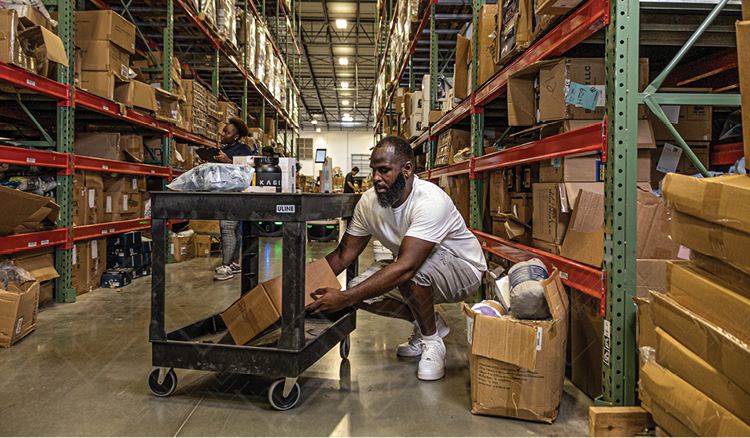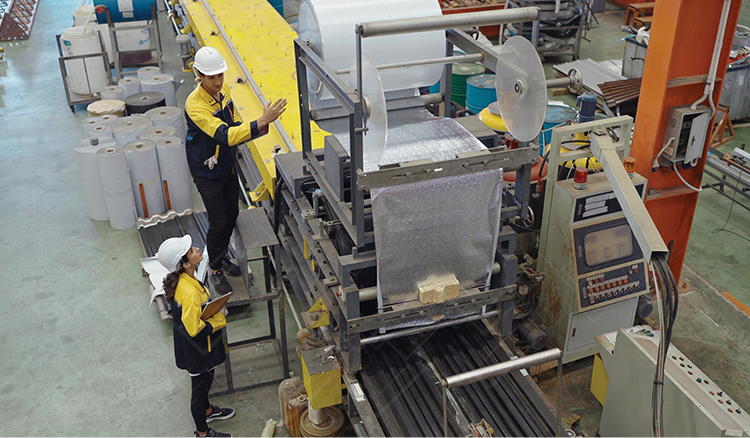The Future of Manufacturing: Real-Time Agile Manufacturing
The next evolution of manufacturing will be true “lot size one” and will respond in real time to customer demands. Real-time agile manufacturing will require new approaches to production, including how labor capacity is managed, how production occurs (i.e. additive manufacturing, asset-light manufacturing), and how the supply chain is arranged (i.e. decentralized manufacturing).
We have covered the topics linked above in depth, from how additive manufacturing enables an asset-light approach to how decentralized manufacturing enables better response to demand.
This article will focus on the piece of the puzzle which you can start implementing today: real-time response to demand through agile manufacturing.
What is Real-Time Agility in Manufacturing?
Real-time agile manufacturing is manufacturing which responds to customer demands in real time by adjusting labor capacity and material flows accordingly without sacrificing lead times. If this sounds like a tall task, that’s because it is. However, that does not mean it is impossible. It only requires a new way of thinking about the problem and a new tool to solve it.
You can achieve real-time agility in manufacturing by implementing flexible labor capacity to respond to daily changes in demand. Then, you can implement additive manufacturing and an asset-light strategy to ease the transition, which would result in the ability for your company to participate in decentralized manufacturing by reshoring production. The end result of this is the perfect combination of local, asset-light, customer-centric manufacturing that responds to variations in demand as its core business strategy.
To sum it up, real-time agile manufacturing is producing exactly what the customer wants and only when the customer has requested it. This is build-to-order at full scale, maximizing your business’s efficiency while also maximizing the customer’s satisfaction.
How to Achieve Real-Time Agility in Manufacturing
- Implement flexible labor capacity
- Transition into asset-light manufacturing
- Customize using additive manufacturing to meet customer specifications
- Decentralize production to improve responsiveness
How Flexible Labor Capacity Enables Real-Time Agility
![What is On-Demand Labor_[1]](https://cdn.prod.website-files.com/657b0bc6e1bbc3dc8b83106c/65824875330442470d1f6260_What%2520is%2520On-Demand%2520Labor_%255B1%255D.jpeg)
Implementing flexible labor capacity allows you to match daily demand changes efficiently. You can maintain a steady cost per unit and drive asset utilization by adding on-demand labor as needed.
As your demand changes daily, which is much more likely as you localize production and go asset-light/additive, you will be able to respond in real time using the infinite flexible capacity offered by on-demand labor.
You can quickly realize the benefits of flexible labor capacity, making it a quick win compared to investing in automation or additive manufacturing. You’ll be able to achieve the other tenets of The Future of Manufacturing more effectively if you solve the labor equation first. For some of those, like additive manufacturing, it is almost a prerequisite if you wish to succeed at scaling these efforts.
How to Implement Flexible Labor Capacity
You can implement flexible labor capacity in a few different ways. To get started, you’ll need to figure out a few key data points: your primary efficiency metric, your current headcount, and the percentage of your labor capacity that you need to be flexible.
Your primary efficiency metric can be units per hour (UPH) or whatever metric you use to track the effectiveness of each department or worker. Ideally, you would calculate this down to the individual worker level to set a benchmark for what each person should be able to do in one hour.
Next, you need your current headcount and the percentage of your labor capacity that you need to be flexible. For example, if you have 50 full-time employees (FTE) but need 70 people on your busiest days, you’ll need 20 on-demand workers on that day. This means the percentage of your labor capacity that you need to be flexible is 40% (20/50 = 40%).
With these numbers, you will be able to calculate the needed labor capacity to meet a day’s demand. With your efficiency metric, you’ll know how many FTEs you need in the building to staff to your minimum, and you’ll also be able to determine how many on-demand workers you need each day.
If you need additional throughput to meet the day’s demand, start by adding on-demand labor to do setup and resupply for specialized workers to increase asset utilization at bottlenecks. You can also apply on-demand workers directly to value-add work.
How to Get Started with Flexible Labor Capacity for Real-Time Agility
Veryable’s on-demand labor platform makes it easy to calculate how much flexible capacity you need before connecting you to workers who are available on demand for manufacturing and distribution work.
Create a business profile today to explore the platform for yourself and see how much on-demand labor could impact your business by enabling real-time agility.
Previous Posts
How Policy Constraints, Not Just Production Bottlenecks, Threaten Your Bottom Line
The Future of Manufacturing and Logistics
Create a free business profile today to explore our platform.






